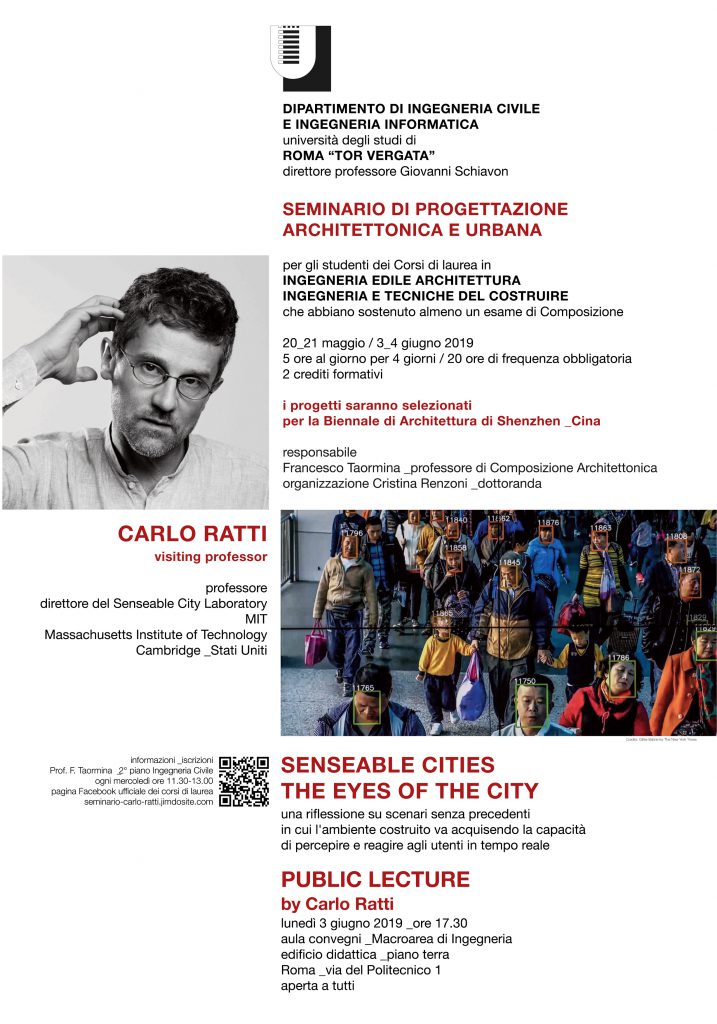Carlo Ratti, architetto e ingegnere del MIT Massachusetts Institute of Technology dove dirige il MIT Senseable City Lab sarà Visiting Professor presso il DICII – Dipartimento di Ingegneria civile e Ingegneria informatica e animerà per gli studenti dei corsi di laurea di Ingegneria Edile-Architettura e Ingegneria e Tecniche del costruire un seminario dal titolo SENSEABLE CITIES _THE EYES OF THE CITY, che sarà svolto in quattro giorni (20-21/05 e 3-4/06) per la durata complessiva di 20 ore e darà diritto a 2 crediti formativi.
Il tema, che riguarda in particolare l’elaborazione del progetto per una installazione alla Stazione Termini, sarà svolto in piccoli gruppi e permetterà a quanti frequenteranno il seminario di partecipare anche alla selezione per la Biennale di Architettura di Shenzhen di cui Carlo Ratti è Chief Curator per l’edizione 2019.
Il lavoro di ricerca del prof. Ratti ha l’obiettivo di esplorare l’impatto delle tecnologie digitali sullo spazio urbano e sulle comunità, per capire come potrebbe cambiare la nostra relazione con le città quando gli edifici risponderanno alla nostra presenza. In diversi interventi pubblici, Ratti ha spiegato che grazie agli ultimi progressi nei campi del deep learning e dell’imaging, si sta raggiungendo uno scenario senza precedenti: lo spazio architettonico sta acquisendo la capacità di ‘vedere’ e può potenzialmente riconoscerci e reagire autonomamente alla nostra presenza. Con quali conseguenze sulla vita urbana? Probabilmente un radicale cambiamento del nostro rapporto con l’architettura e lo spazio fisico.
Il prof. Carlo Ratti terrà inoltre, al di fuori dell’attività seminariale, una PUBLIC LECTURE lunedì 3 giugno 2019 alle ore 17.30 presso l’aula convegni della Macroarea di Ingegneria, a cui tutti sono invitati.
Sul sito http://seminario-carlo-ratti.jimdosite.com si trovano le info sul seminario, coordinato dal prof. Francesco Taormina, e le modalità di iscrizione per gli studenti.
LINK utili
http://senseable.mit.edu/
http://dusp.mit.edu/faculty/carlo-ratti
https://www.youtube.com/watch?time_continue=78&v=wC7cTHzx-IU



